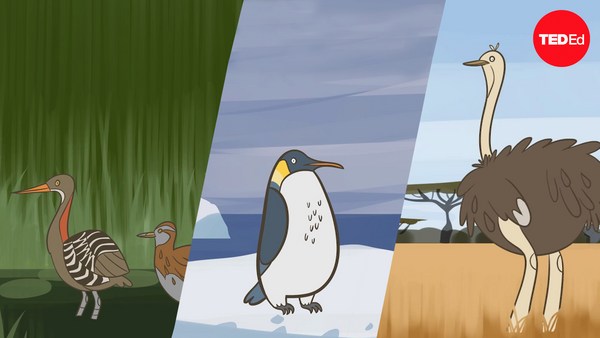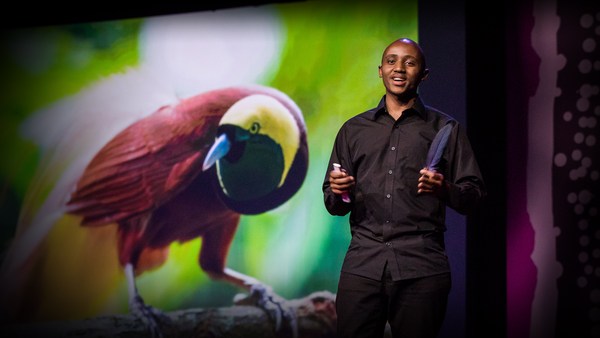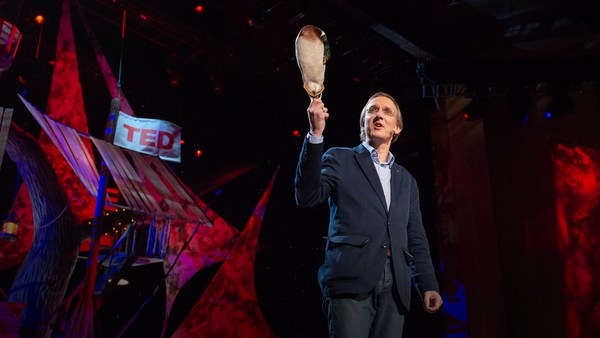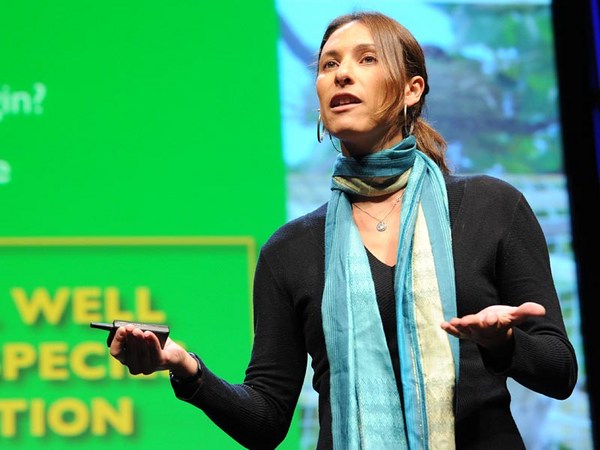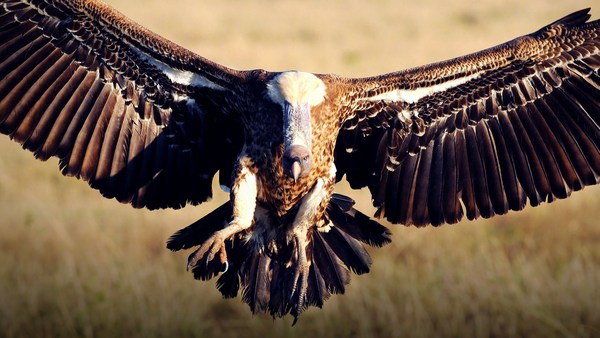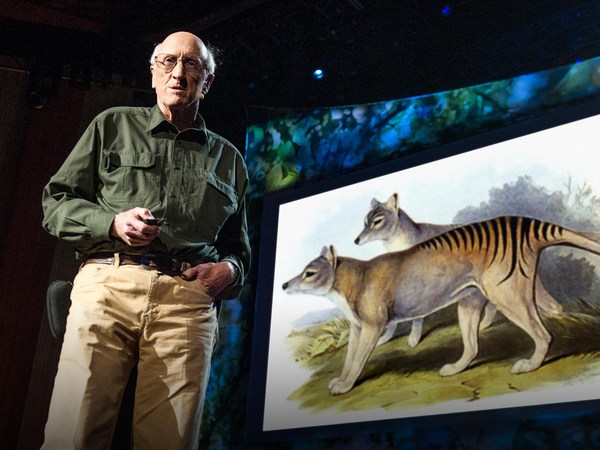For the past ten years, I have been very fortunate to work with and study wildlife in Kenya and other parts of Africa. Over this time, birds are one group of animals that I've been very fortunate to work with. For me, birds are my passion, and I want to change the way you all look at birds from today henceforth because among all the world's animals, I know that birds are some of the most misunderstood species, and I'll help you today. For us humans, world records represent skills, strength and even wisdom, and we are always very proud of ourselves when we set these records. But did you know that even birds have their own world record holders? I'll show you some examples. Owls, like this guy here, are very, very common around the world, and many societies have different stories about them. Some view them as good birds; others view them as a source of bad omen. But did you know that these amazing birds are able to hunt for rats and mice in complete darkness? They use their ears as a screen to view their entire surroundings, and among all the wild birds, the barn owl has the keenest sense of hearing and that gives him a world record. Cheetahs have been portrayed for many years as being the fastest animals on earth, and probably some of you still believe that. But a bird, the peregrine falcon, is indeed the fastest animal on earth. These incredible birds can attain speeds of up to 188 kilometers per hour, compared to the fastest man on earth, who is at about 44 kilometers per hour. If he were to compete against this bird, he would need to move four times faster. And the most amazing thing is they are only 19 inches big. For us humans, who are earthbound, birds represent a lot of freedom by the way they fly. They have managed to use their feathers to engineer wings that enable them to conquer gravity, and to us this means freedom. But one bird has even taken flying to a whole new level, and this is the common swift. This amazing little bird is able to fly for ten months non-stop, without landing. Just imagine flying for ten months! (Applause) And you don't land anywhere. I'll give you the whole illustration. They move all the way from Scandinavia, they go to Africa for winter, and then they move back north to go and breed in Scandinavia. And you know the best part? During this entire migration, these birds are able to drink, to eat, and even mate while they are still flying. (Laughter) (Applause) Some scientists are now even starting to believe that they do sleep a little while they are still flying for them to refresh their brains. But not all records are probably worth clapping for, and you might think twice after listening to this story. This very beautiful bird behind me is called the hoopoe, and the hoopoe is one bird that I doubt goes around boasting about its world records, because this very beautiful bird holds the world record for having the foulest-smelling nest among all the birds. So in human terms, this would mean you are receiving a gold medal for having the worst-smelling bedroom in the entire world. And this record coming from such a beautiful bird is so incredible because indeed it's a beautiful bird. So the Englishman was right when he said that looks can be deceiving. (Laughter) Birds are indeed very intelligent animals, and they are able to use their skills and ingenuity to do very amazing things, and I'll give you some two examples. The birds behind me are called weaver birds, a name they are given for the way they make their nests, and then those nests act as their homes. The role of making the nests is performed by the males, and they do this by using just their beaks and their feet. They don't have hands - their hands are into wings. They start by using a single straw of grass or a single stick. So you can imagine making such a nest starting with just one grass. How do you even balance it? Once the males are finished, they invite the females to come and inspect. And if the females are happy, then they'll move in and form a family. However, if the nest is not up to standard, mister, you'll have to try next time. (Laughter) A very interesting thing has been observed by us as we study these birds. We've noticed that some notorious males build multiple nests, and then they strive to get multiple tenants for each of these nests. And therefore they can have multiple families! (Applause) Another interesting group of birds are called the hornbills, and you can see their beaks are big and they look like horns. But these intelligent birds have adopted a very interesting way of breeding. They breed in tree cavities or crevices inside rocks. What they do is that the female moves inside, and together with the male, they seal the entire opening, leaving just a small gap for the beak. The female will stay inside during the entire breeding time with the eggs, and later on, she even sheds all her feathers and stays there with the chicks until they are able to fly. During this entire time, the male hunts for food and brings it to the nest, passing it to the female through that small opening for the entire breeding season. The most incredible thing is if anything were to happen to the male when he's on a hunting expedition, then you can expect that the female, who automatically has no feathers, and the poor chicks will most likely perish in that nest. And for me, I love birds so much because I know they help us in so many ways, and we humans need to start understanding that we need to start helping birds. They help us to pollinate our food crops and even disperse seeds from our fruits. Without these amazing birds, the world would indeed struggle to sustain agriculture. Another group of birds, the birds of prey, are very important in that they control the populations of other animals on earth, and this control ensures that our environments remain stable and that our ecosystems are balanced at all times. So these incredible hunters are very important. Another group of birds, the scavengers - the vultures, the crows that we see around our homes and even our towns - these incredible birds see your garbage and trash from your house, and they start salivating because that's what they feed on. This enables our environments to remain clean and avoid bad smells that would otherwise make these places inhospitable. So they are very important. But we humans are causing so many problems to birds, and every day, we're endangering their existence here on earth. We do many things that contribute to this endangerment, and, indeed, the populations of birds that we see around the whole world are a clear reflection of our own activities as humans and even the ethical values that we believe in. We contribute to things like habitat loss, especially through deforestation, poaching, and hunting of wild animals, especially wild fowl or what we call the wild bird shooting. We also contribute to poisoning and pollution of our environments, especially using plastics, which affects birds a lot. And we cannot ignore the contribution of climate change and its impacts, such as desertification. All these things are threatening birds on a daily basis, thanks to us humans. But I'm going to give you a solution today. There is now an easy way for all of us here today to start contributing to the conservation of birds across the entire world, and we can do this by becoming citizen scientists. We live in a world where mobile phones have become a daily-use electronic, and in fact, we joke that we spend so much time on the phone that we forget to enjoy the beautiful birds up there - I hope you are not using your phones now - and these phones present a beautiful opportunity. Because there are now mobile phone applications that have been developed and are available for you to download and start sharing data with scientists about the birds you see wherever you go. These incredible mapping projects have enabled scientists to prioritize conservation where it matters the most. And I'll give you some examples that you can download today and start mapping birds right now. We have, for example, eBird, iNaturalist, and BirdLasser, and these mobile applications can help you to even practice and become a better bird watcher because every day you are working on them, then it's a chance for you to practice. And most importantly, you'll be contributing to projects that are helping to save birds all over the world. We live in a world of 7 billion people, and in this world, there are about 10,000 species of birds. This means that if all of us were to be involved in conservation of birds, every single species on earth would have 700,000 humans dedicated to saving that species. For me, that's more than enough people than we need to conserve every species on earth, and I believe that we together can all do it. So from today, you are now informed about birds, you understand that they are part of our lives and part of our ecosystems, and you know how incredible they are and their interesting lives, so go home and tell your family and friends about birds. Please join us in citizen science, and tell us about the birds you're finding in the places you visit. Even simpler, spend a few minutes in your daily schedules, whether you're at home, at school, or even at work, to enjoy the beautiful birds you see around you. Because I believe the day we make bird watching part of our lives is the same day that we shall get the urge to start saving these species. Buy yourself a pair of binoculars and see just how beautiful these birds are. Please come and join me in sharing the love and the passion for birds across the entire world. Thank you very much. (Applause)
